Designed to be used in diverse applications, two types of optical fiber are available on the market; one is SMF or single-mode fiber, and the second is MMF or multimode fiber. This article will help our readers understand significant differences between multimode and single-mode type fibers.
A comparison between SMF and MMF
The single-mode fiber refers to the fiber's ability to propagate just one type of light mode at any given time. Meanwhile, multimode refers to the fiber's disseminate various methods. The significant differences between single-mode and multimode fiber lie in the core diameter, distance, color sheath, cost, wavelength, light source and, bandwidth.
Core Diameter
The core diameter of single-mode fiber is relatively much smaller than that of the multimode fiber, and it usually is found in 9 µm diameter. In comparison, the core diameter of multimode fiber remains between 50 µm and 62 µm. Generally speaking, MMF comes with better light gathering capabilities and offers simplified connections. Both single and multimode fibers have a cladding diameter of 125 m.
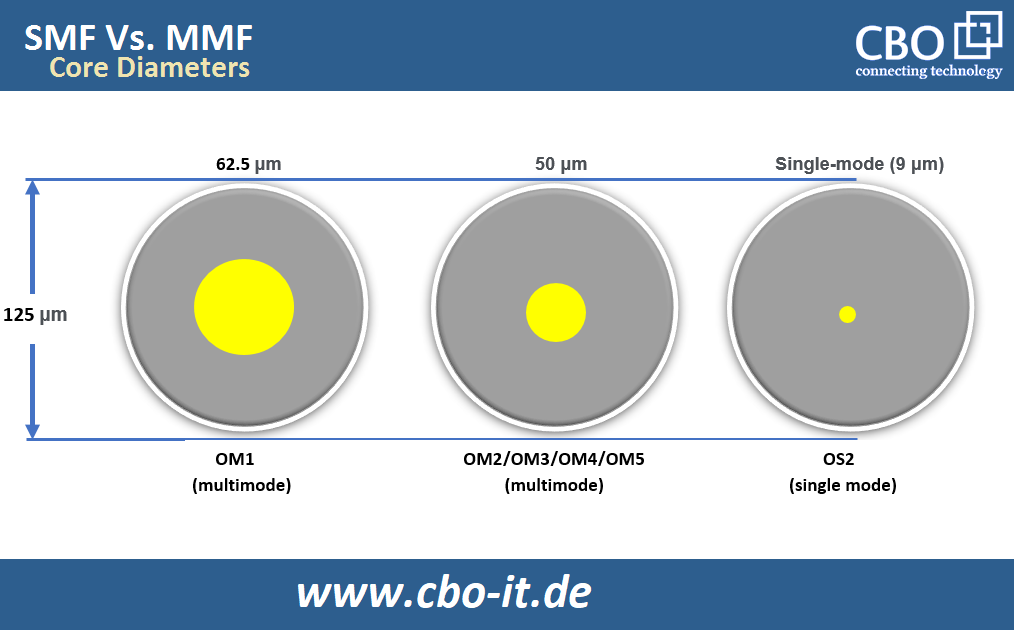
As far as the attenuation is concerned, the larger core diameter of multimode fiber operates at a higher attenuation than single-mode fiber. On the other hand, the narrow core diameter of the single-mode fiber limits the internal reflection of light. Hence, in single-mode, fiber attenuation remains minimum.
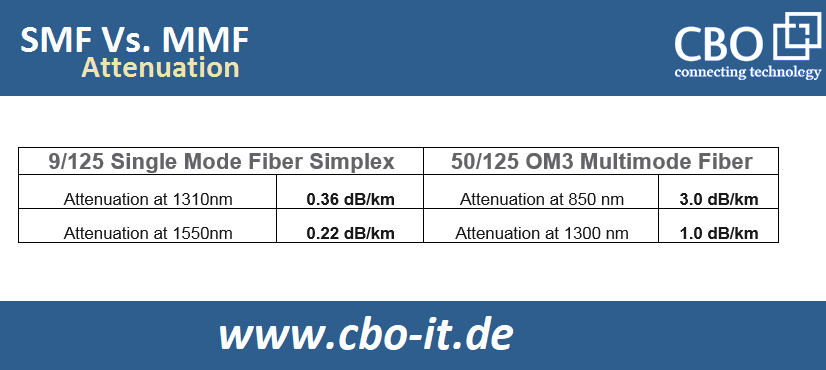
Distance
Single-mode fiber is advisable for long-distance applications, whilst multimode fiber optic cable is targeted for shorter distances. The following chart summarizes quantifiable differences between the two types of fibers in terms of achievable link distance.
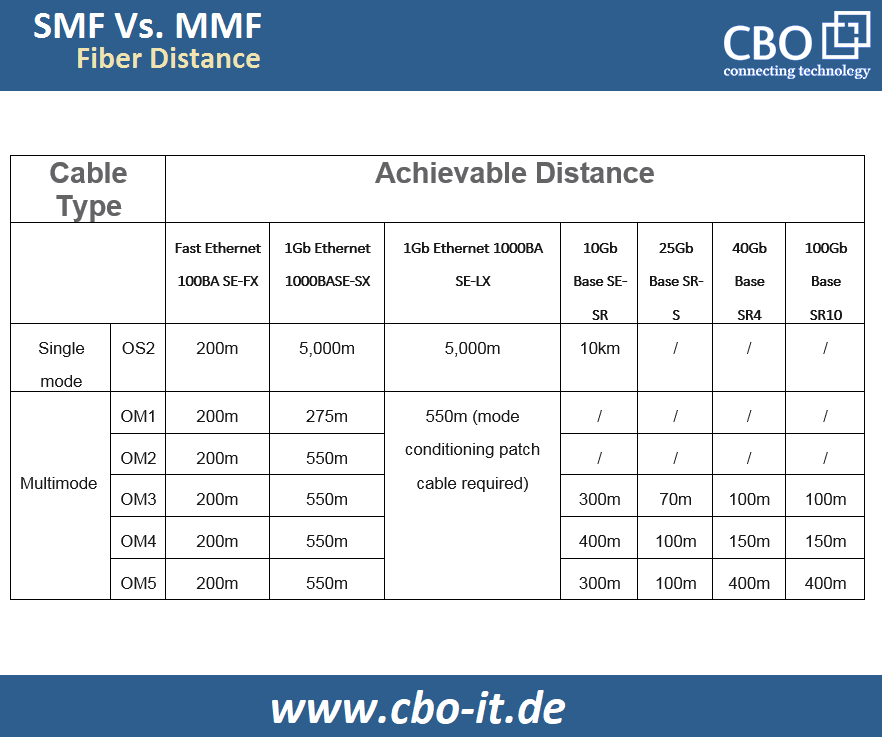
This chart clearly shows that single-mode fiber cables have a significantly greater reach than multimode fiber cables for data rates ranging from 1G to 1OG. In contrast, OM3, OM4, OM5 multimode fiber has a higher data rate. As multimode optical fiber has a massive core and may sustain many light modes, its fiber distance is restricted by modal dispersion - a common phenomenon in multimode step-index fiber but not in single-mode fiber. That is the primary distinction between them.
Furthermore, OS2 single-mode fiber may be able to handle more extraordinary lengths in 4OG and 1OOG connections, which are not included in the chart.
Color Sheath of SMF and MMF
Single-mode cable is covered with a yellow outer sheath for non-military applications, while multimode fiber is covered with an orange or aqua jacket, according to the TIA-598C standard specification.
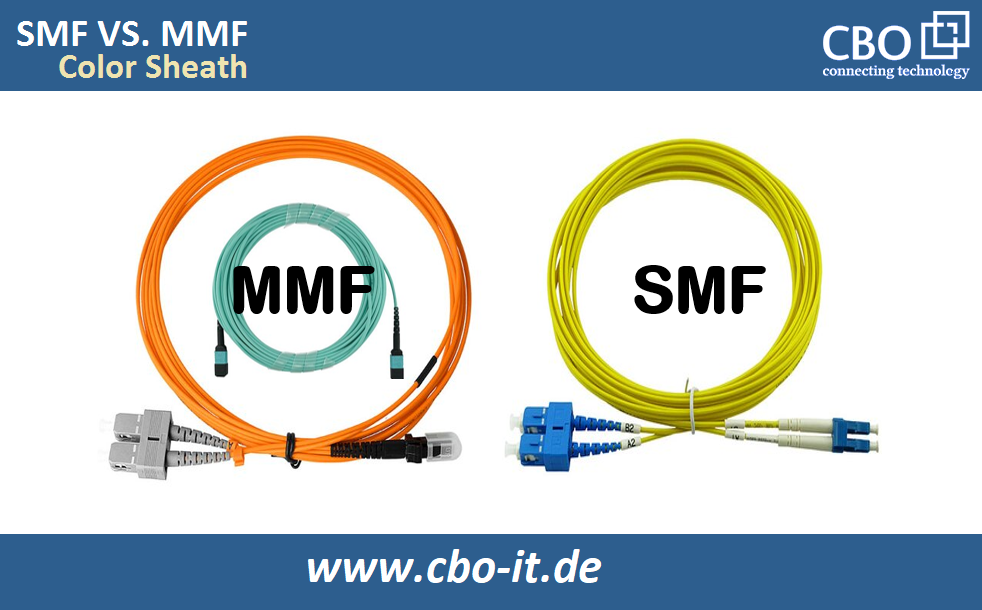
Cost of SMF and MMF
The cost of single-mode and multimode fiber is a popular topic and is discussed chiefly among networking professionals. Their opinion primarily focuses on optical transceivers, installation cost, maintenance cost and overall system cost.
Cost of Optical Transceiver
When compared single-mode transceivers to multimode transceivers, they are approximately more than two & three times less expensive.
Cost of System
To take full advantage of major single-mode fiber attributes, which are geared towards long-distance applications, laser power transceivers operating within a narrower spectral range with smaller spot sizes and at longer wavelengths are essential. These transceiver qualities, along with the requirements for higher-precision alignment and more acceptable connection tolerances to small core sizes, result in higher setup costs and higher interconnect costs for single-mode fiber interconnects.
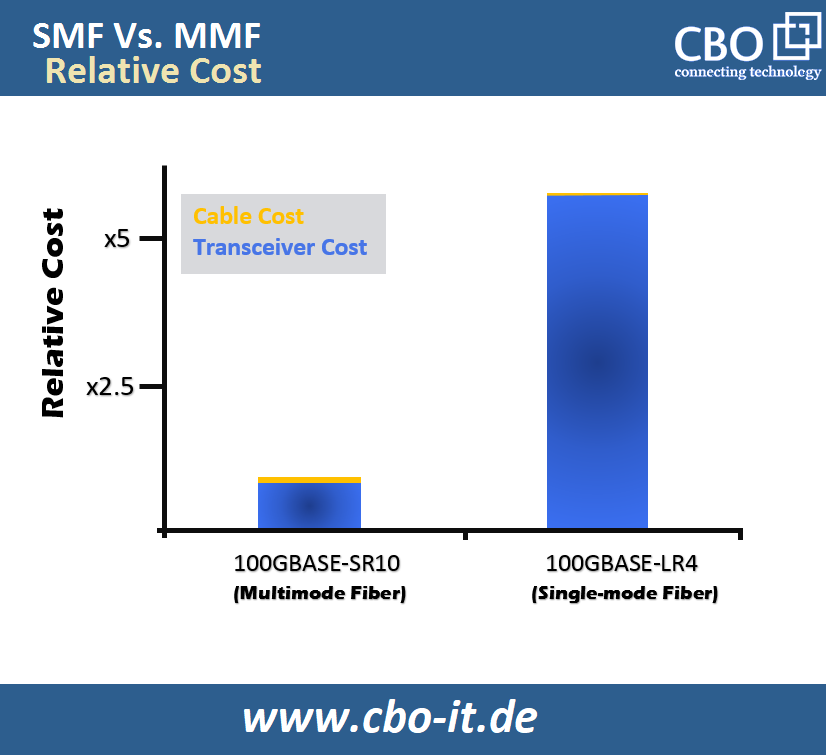
Wavelength and Light Source
With the larger core size of multimode fiber, some low-cost light sources such as LEDs (light-emitting diodes) and VCSELs (vertical-cavity surface-emitting lasers), which operate at 85Onm and 13OOnm wavelengths, are utilized in multimode fiber cables. Although single-mode fiber frequently employs laser or laser diodes to generate light that is injected into the cable. The wavelengths of single-mode fiber that are most often utilized are 1310 nm and 1550 nm.
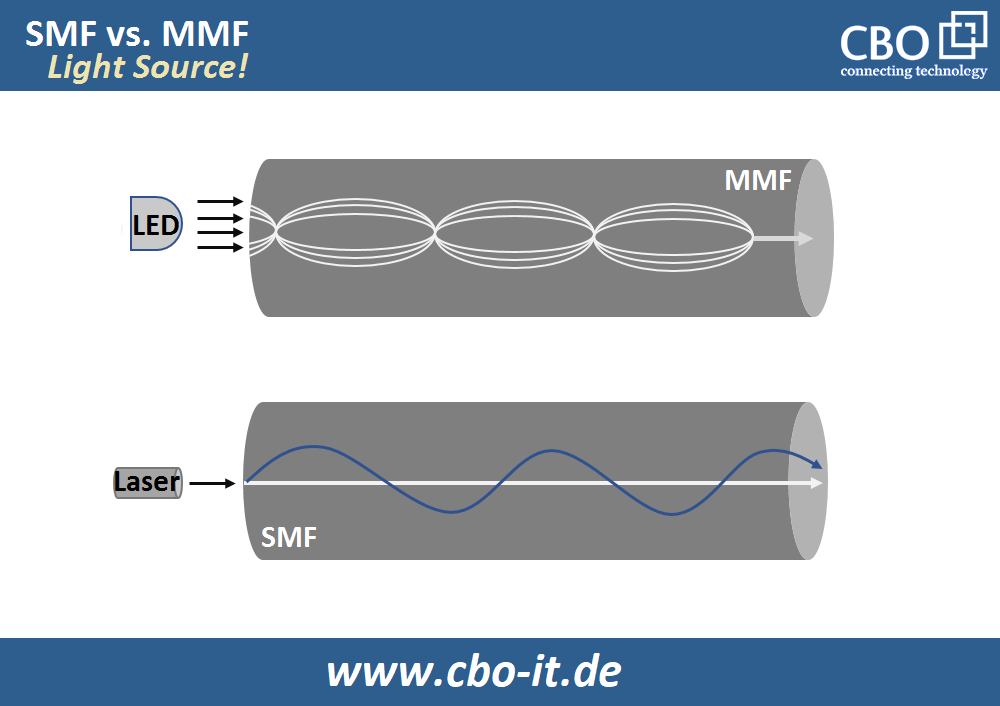
Bandwidth
The maximum bandwidth of multimode fiber is 28K MHz*km of OM5 fiber, which is restricted by its light mode. In comparison, single-mode fiber bandwidth is theoretically infinite since it only enables one light mode to flow through at a time.
General Questions about Single & Multimode Fiber Cable:
Q: Which type is better single or multimode fiber cable?
A: As previously explained, single-mode fiber and multimode fiber cable have their own cost and application benefits. There is no such thing as single-mode optical fibers being superior to multimode optical fibers. Both types of fibers can work fine for you, provided that you have chosen the right one.
Q: Is it possible to combine single and multimode fiber cables?
A: the simple answer is "No". Multimode fiber and single-mode fiber come with different core diameters and are capable of transmitting different light modes. You will incur a more significant optical loss if you mix the two fibers or connect them directly. Keep in mind that you should never combine various types of cabling at random.
Q: Multimode transceiver on single-mode fiber cable is useable?
A: The answer is "no" for this question too. When a multimode transceiver is paired to a single-mode fiber, massive optical loss occurs. In some cases, fiber media converters can be deployed for the resolution of such issues.
Q: Single-mode or multimode fiber cable which should I chose?
A: When determining between single-mode and multimode fiber cables, evaluating the main thing is the fiber distance involved. In a data center, for example, multimode fiber cables are sufficient for a distance of 300-400meters. Single-mode fiber is the best solution for applications requiring distances of up to many thousands of meters. If single-mode and multimode fiber may be used, other factors like cost and prospective modification requirements should be considered.
Q: What are the most common applications of SMF and MMF?
Single mode Fiber is used mainly in operations where information is to be transferred over great distances, up to 150 kilometers (93 miles). Lasers are used as the light source to produce focused, parallel light that translates into a low loss.
Multimode Fiber is designed to be used in up to 2km (approximately 1.2 miles) applications. The light used to send information is a LED or Light Emitting Diode. LEDs don't provide light at the same high frequency as lasers do, and thus the quality of data being sent via the cable cannot be trusted over great distances. Optical fiber systems cost less than conventional networking systems because copper-based communication systems' deployment, operation, and maintenance costs are higher than fiber.
Practically, copper is a non-renewable resource and is become scarcer than the raw material used to create the glass inside Optical Fiber, sand. Commercially available optical fiber systems support the transmission of data for miles without requiring intermediate repeaters. A copper wire needs a repeater and, in some cases, almost once per mile.
Conclusion
Single-mode fiber cabling systems are suited for large distance data transmission applications and are commonly applied in carrier networks, MANs, and PONs, according to the comparisons of single-mode vs multimode fiber. Multimode fiber cabling systems have a smaller radius and are frequently used in corporate, data centers, and local area networks (LANs). No matter which one you pick, choosing the one that best matches your network demands based on overall fiber cost is crucial for any network engineer.
 English
English
 Deutsch
Deutsch
 Espaniol
Espaniol










